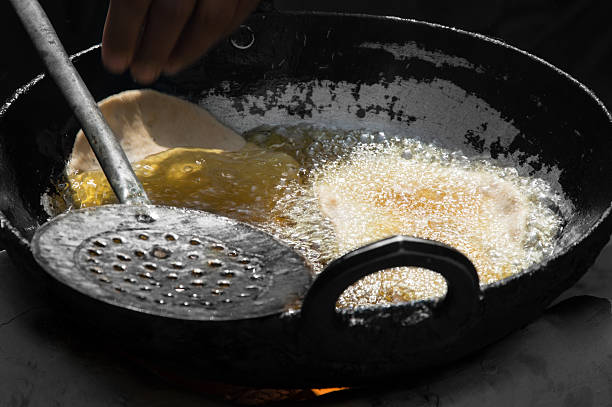Allopathic medicine recognizes that only 0.3% of the thermally processed food digested benefits our systems. At the same time, all the rest is waste that does more harm than good.
What is a raw food diet? Also known as raw foodism or raw veganism means consuming wholly raw and unprocessed foods. Food could be considered raw if it has never been heated over 104–118°F (40–48°C). It should also not be refined, pasteurized, treated with pesticides, or otherwise processed in any way.
With Raw food, you increase absorption capacity significantly, and your body can absorb 30% of your raw food. No wonder raw food has all the vitamins, minerals, and enzymes in pure form, which are perfectly compatible.
Read More: Vital Kitchen Appliances and Tools for Creative Raw Home Chef
Table of Contents
What is Happening Inside Your Frying Pan?

Everyone knows that vitamins and enzymes get broken down during heating food. However, not many people have heard that new harmful elements are created inside saucepans and frying pans.
There is an excellent variety of food substances; the world of organic molecules is infinite. But most of them are very sensitive to external conditions and higher temperatures. They get created and can live only in live cells of plants and animals at typical body/environment temperatures, i.e., approximately 0 to + 45 degrees. Nature made digestion systems of all living creatures to these substances at those temperatures, and our ancient ancestors ate such food without cooking by heating. However, some time ago, people began to heat their foods barbarously.
The Actual Chemistry Inside Frying Pan
In the saucepans, food temperature in the presence of water reaches 100 degrees, and inside frying pans and furnaces, it rises to 200 hundred and above. At such temperatures, the molecules and most chemical bonds are broken off inside a complex food, and the active and most biologically valuable substances are also broken down. In addition, oxygen or ions of other turned molecules increase the negative chemical process. The disintegration of molecules and recombining of the turned-out ions are very harmful when mixed with foods. A typical example of such mixes is rich soups. Water presence adds a still destructive effect of hydrolysis.
As a result of these processes not provided by nature, new substances alien to initial foods are formed, i.e., the chemical composition of food changes. For this reason, food changes its original smell, taste, and even its appearance. In other words, valuable food substances get damaged inside saucepans and frying pans, and a set of new substances alien to nature and the human body takes place. Building up inside human bodies, they intoxicate an internal environment and trigger various health issues. Maybe this is a time to reconsider the approach to the lifestyle we lead and the food we eat.
Hunza people who eat only raw food live until the age of 140–160
An ancient Hunza tribe lives in a remote Himalayan valley in Kashmir, who believe they are ancestors of Alexander Makedonsky’s soldiers. Hunza people live until the age of 140–160. Illnesses that affect modern human society are not known to the Hunza people. Even such common issues as toothache or lousy eyesight are unknown to them, even though many nearby communities suffer from tuberculosis, typhoid, hypertension, and diabetes.
Not long ago, one of the European missionaries decided to build a hospital for the Hunza people but was very surprised to see no patients for weeks and months. He researched the phenomenon and concluded that Hunza people lead an ideal style of life when people are healthy, happy, and do not age. At 50–60, people are still considered to be young; they are full of energy, look like 20-year-olds, and even start families when people of Western society retire.
The secret of the health and longevity of the Hunza lies in the way they eat, which is raised to the rank of religion and national pride. Here is, for instance, a typical Hunza bread recipe: wheat grains ground in a stone mortar into flour without yeast, then mixed with water. The dough is shaped like pancakes and dried on the walls of their houses under the sun. All the nutrients remain inside the bread.
Men are still playing outdoor games at the age of one hundred, and women at 60–70 have children. According to the scientists who studied the life of Hunza, they eat only raw fruits, mainly apricots. During winter, they eat dried fruits. Apricots there is the most honorable fruit. In the tribe, there is a saying: Your wife will not follow you where no apricots grow.
Their raw diet can only explain their physical and spiritual well-being. The vegan raw diet is the only thing distinguishing them from the neighboring peoples living under the same environmental conditions and not as healthy as Hunza.




